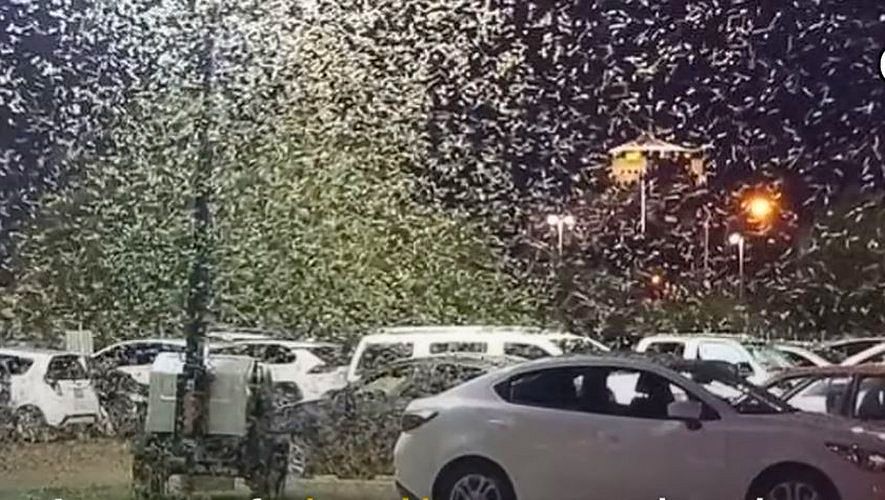UNITED STATES INVASION OF THOUSANDS OF LOCUSTS
IN NEVADA | |
Within days, locusts invaded roads, fields and buildings in the city. A new insect invasion for Nevada, which had experienced a similar situation in 2019. The inhabitants noted with desolation that the locusts completely covered the walls of the houses. An invasion of locusts into the hall of the village hospital: “We had people with leaf blowers, with brooms. We even had a tractor with a snow plow just to push the piles of crickets and move them out of the way,” says the facility's communications director. The roads are also covered with a mass of insects. A situation making circulation laborious. They cause road accidents. These Mormon crickets are flightless. Their wings have been replaced by a shield on their backs which proves dangerous for traffic. The thousands of bugs that get squashed on Nevada roads create a slippery layer causing traffic accidents. "The biggest problem is those afternoon thunderstorms, and put a little water on it, and it gets slippery." The Nevada Department of Transportation uses snow plows to dispose of the remains, as their exodus lasts between three and six days. These locusts are not there by chance. According to Nevada Department of Agriculture entomologist Jeff Knight, “Mormon crickets have a life cycle of four to six years, laying their eggs in July. These eggs usually hatch the following spring, but the wet conditions this winter have delayed the arrival of new insects,” he told US channel KSL5 TV in Salt Lake City. "This year we are really late, we didn't have an outbreak until mid-April," he adds. The "Mormon cricket" generally feeds on plants, but it can become cannibalistic when it finds itself without food. In the spring, the insect migrates in swarms to the northwestern United States to find plants to devour. Its movements are slow, because the species has the particularity of not being able to fly. Extremely voracious, its passage often leaves behind devastated crops to the chagrin of local livestock. Between 2001 and 2003, grasshoppers caused up to $25 million in damage to Utah plantations, according to USA Today. These insects take their name from a devastating invasion in the fields of Mormon settlers in Utah in the 1800s. |
|
| Emily Jackson for DayNewsWorld | |
 |
|




